Conservation measures help Tibetan antelope migrate in SW China's Xizang
新華網(wǎng)
Editor: huaxia
2025-07-20 07:42:54
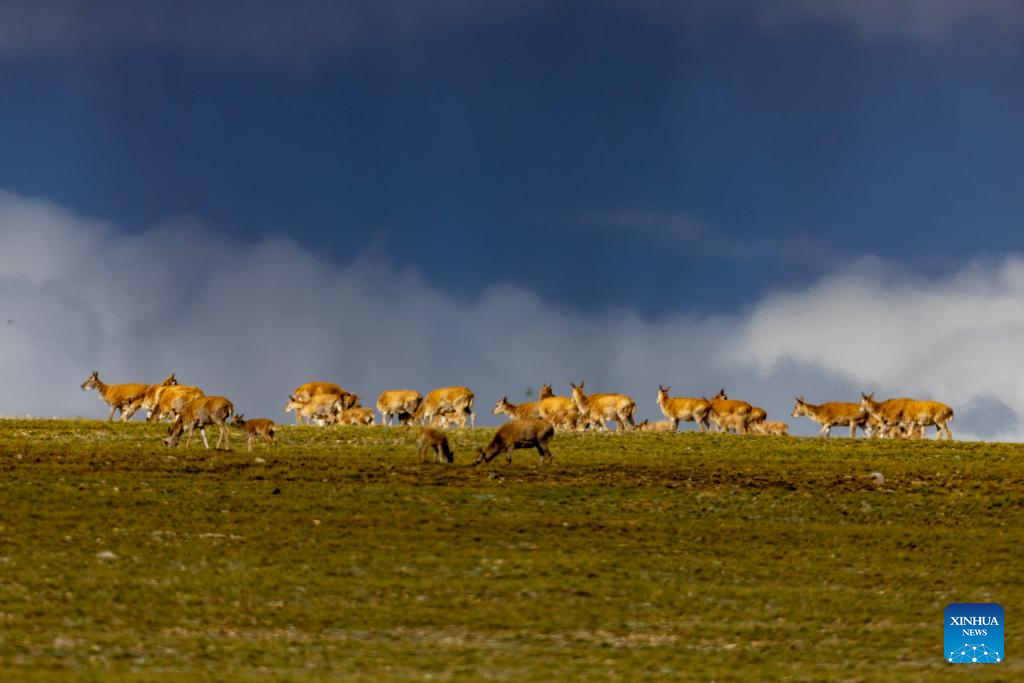
Tibetan antelopes prepare to cross the Senlong Zangbo River in Changtang National Nature Reserve in southwest China's Xizang Autonomous Region, July 14, 2025. The Senlong Zangbo River, located in Changtang National Nature Reserve in Nagqu, is a vital migration route for Tibetan antelopes. Each July, Tibetan antelope calves and their mothers cross the river and migrate to their habitats. Over the past three years, the number of Tibetan antelope migrating across this river has exceeded 150,000 each year.
Thanks to effective conservation measures, the number of Tibetan antelopes in Xizang has increased to more than 300,000, according to data from the region's ecology and environment department. (Xinhua/Jiang Fan)
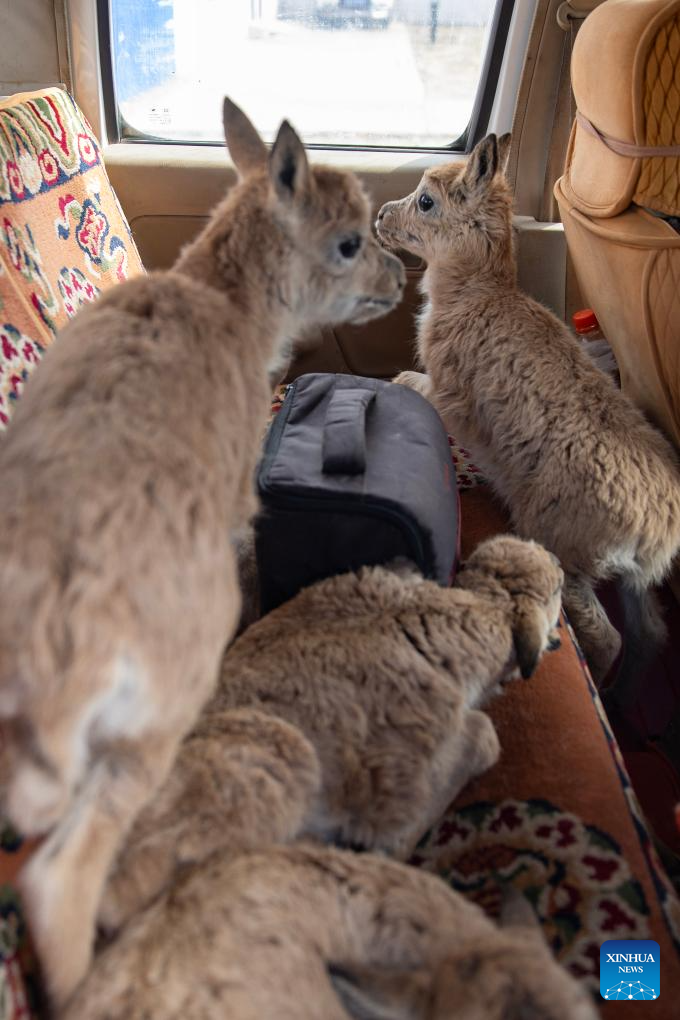
Rescued Tibetan antelope calves rest in a car in Changtang National Nature Reserve in southwest China's Xizang Autonomous Region, July 14, 2025. The Senlong Zangbo River, located in Changtang National Nature Reserve in Nagqu, is a vital migration route for Tibetan antelopes. Each July, Tibetan antelope calves and their mothers cross the river and migrate to their habitats. Over the past three years, the number of Tibetan antelope migrating across this river has exceeded 150,000 each year.
Thanks to effective conservation measures, the number of Tibetan antelopes in Xizang has increased to more than 300,000, according to data from the region's ecology and environment department. (Xinhua/Jiang Fan)
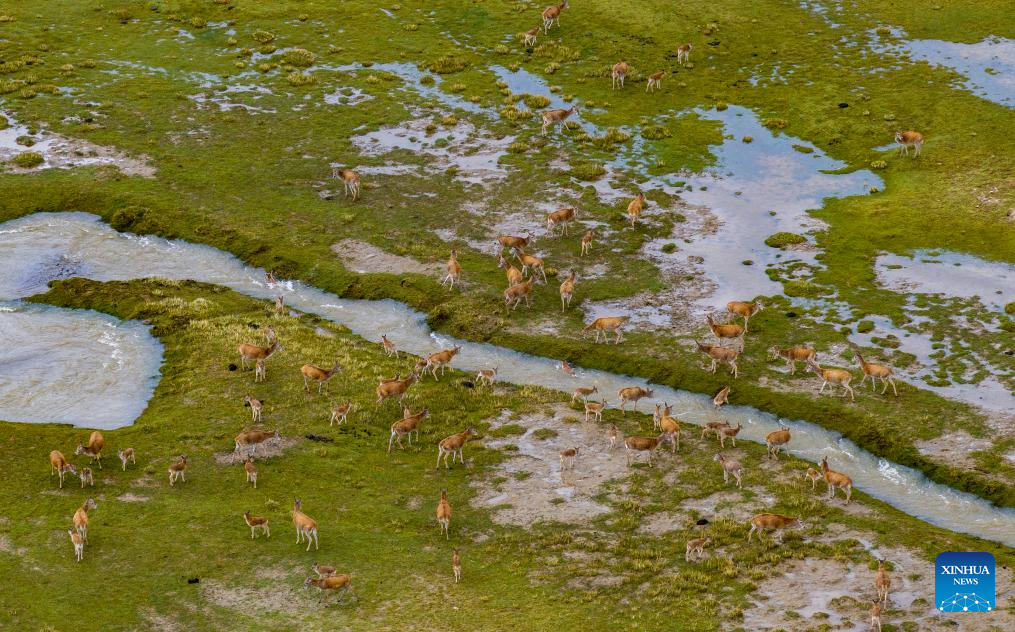
This aerial drone photo shows Tibetan antelopes crossing the Senlong Zangbo River in Changtang National Nature Reserve in southwest China's Xizang Autonomous Region, July 14, 2025. The Senlong Zangbo River, located in Changtang National Nature Reserve in Nagqu, is a vital migration route for Tibetan antelopes. Each July, Tibetan antelope calves and their mothers cross the river and migrate to their habitats. Over the past three years, the number of Tibetan antelope migrating across this river has exceeded 150,000 each year.
Thanks to effective conservation measures, the number of Tibetan antelopes in Xizang has increased to more than 300,000, according to data from the region's ecology and environment department. (Xinhua/Jiang Fan)
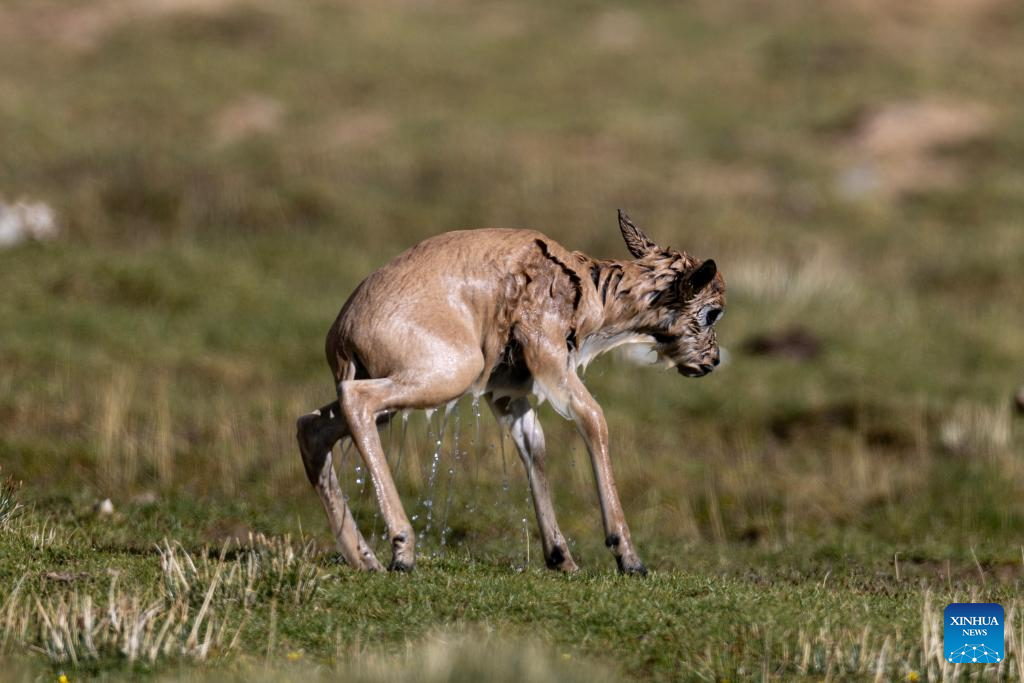
This photo taken on July 14, 2025 shows a Tibetan antelope calf in Changtang National Nature Reserve in southwest China's Xizang Autonomous Region. The Senlong Zangbo River, located in Changtang National Nature Reserve in Nagqu, is a vital migration route for Tibetan antelopes. Each July, Tibetan antelope calves and their mothers cross the river and migrate to their habitats. Over the past three years, the number of Tibetan antelope migrating across this river has exceeded 150,000 each year.
Thanks to effective conservation measures, the number of Tibetan antelopes in Xizang has increased to more than 300,000, according to data from the region's ecology and environment department. (Xinhua/Jiang Fan)
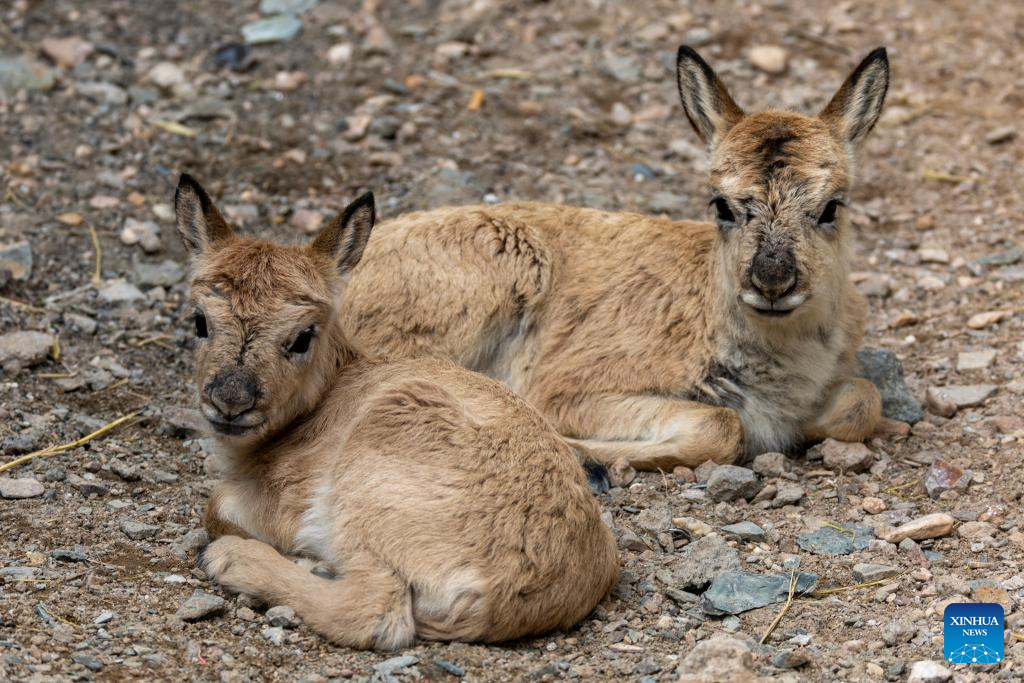
Two rescued Tibetan antelope calves rest at a management station in Changtang National Nature Reserve in southwest China's Xizang Autonomous Region, July 14, 2025. The Senlong Zangbo River, located in Changtang National Nature Reserve in Nagqu, is a vital migration route for Tibetan antelopes. Each July, Tibetan antelope calves and their mothers cross the river and migrate to their habitats. Over the past three years, the number of Tibetan antelope migrating across this river has exceeded 150,000 each year.
Thanks to effective conservation measures, the number of Tibetan antelopes in Xizang has increased to more than 300,000, according to data from the region's ecology and environment department. (Xinhua/Jiang Fan)

This aerial drone photo taken on July 14, 2025 shows Tibetan antelopes crossing the Senlong Zangbo River in Changtang National Nature Reserve in southwest China's Xizang Autonomous Region. The Senlong Zangbo River, located in Changtang National Nature Reserve in Nagqu, is a vital migration route for Tibetan antelopes. Each July, Tibetan antelope calves and their mothers cross the river and migrate to their habitats. Over the past three years, the number of Tibetan antelope migrating across this river has exceeded 150,000 each year.
Thanks to effective conservation measures, the number of Tibetan antelopes in Xizang has increased to more than 300,000, according to data from the region's ecology and environment department. (Xinhua/Jiang Fan)
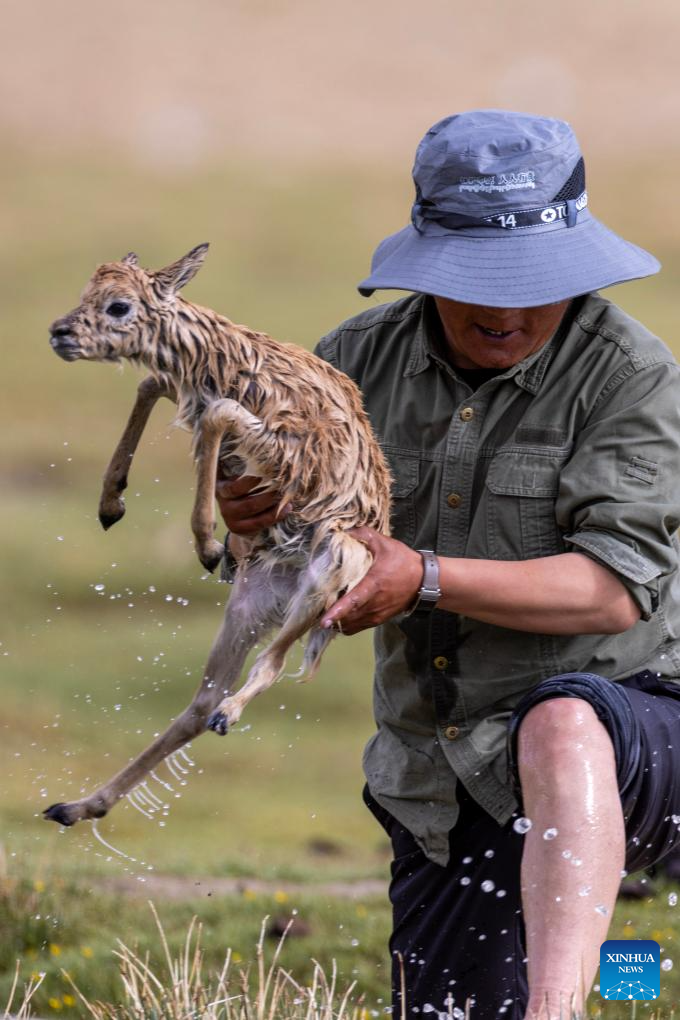
A ranger rescues a stranded Tibetan antelope calf in Changtang National Nature Reserve in southwest China's Xizang Autonomous Region, July 14, 2025. The Senlong Zangbo River, located in Changtang National Nature Reserve in Nagqu, is a vital migration route for Tibetan antelopes. Each July, Tibetan antelope calves and their mothers cross the river and migrate to their habitats. Over the past three years, the number of Tibetan antelope migrating across this river has exceeded 150,000 each year.
Thanks to effective conservation measures, the number of Tibetan antelopes in Xizang has increased to more than 300,000, according to data from the region's ecology and environment department. (Xinhua/Jiang Fan)
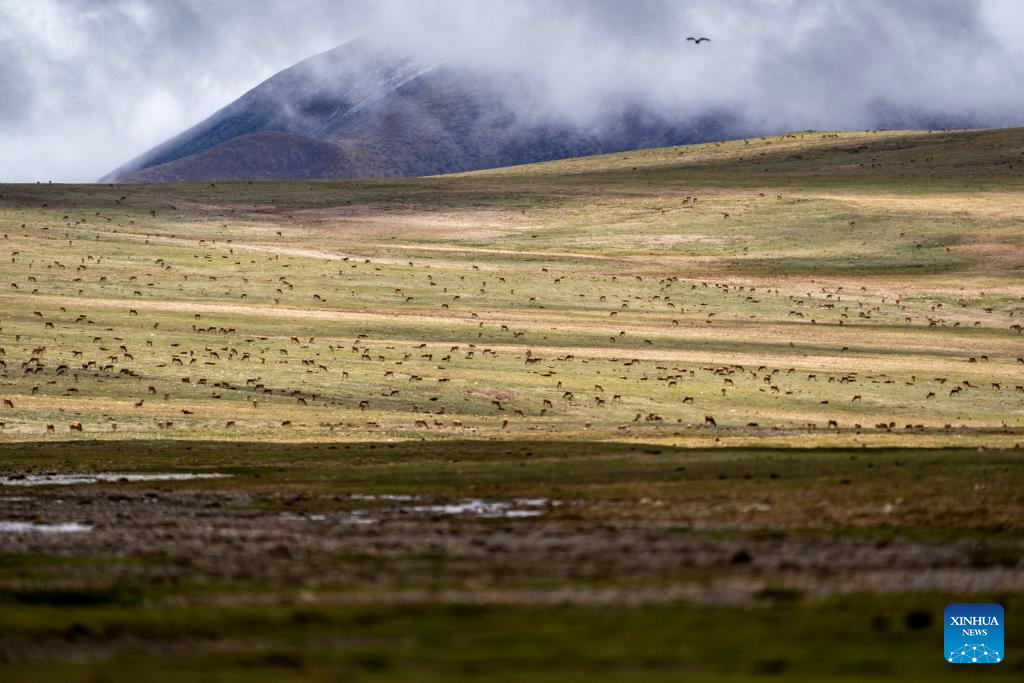
Tibetan antelopes prepare to cross the Senlong Zangbo River in Changtang National Nature Reserve in southwest China's Xizang Autonomous Region, July 15, 2025. The Senlong Zangbo River, located in Changtang National Nature Reserve in Nagqu, is a vital migration route for Tibetan antelopes. Each July, Tibetan antelope calves and their mothers cross the river and migrate to their habitats. Over the past three years, the number of Tibetan antelope migrating across this river has exceeded 150,000 each year.
Thanks to effective conservation measures, the number of Tibetan antelopes in Xizang has increased to more than 300,000, according to data from the region's ecology and environment department. (Xinhua/Jiang Fan)
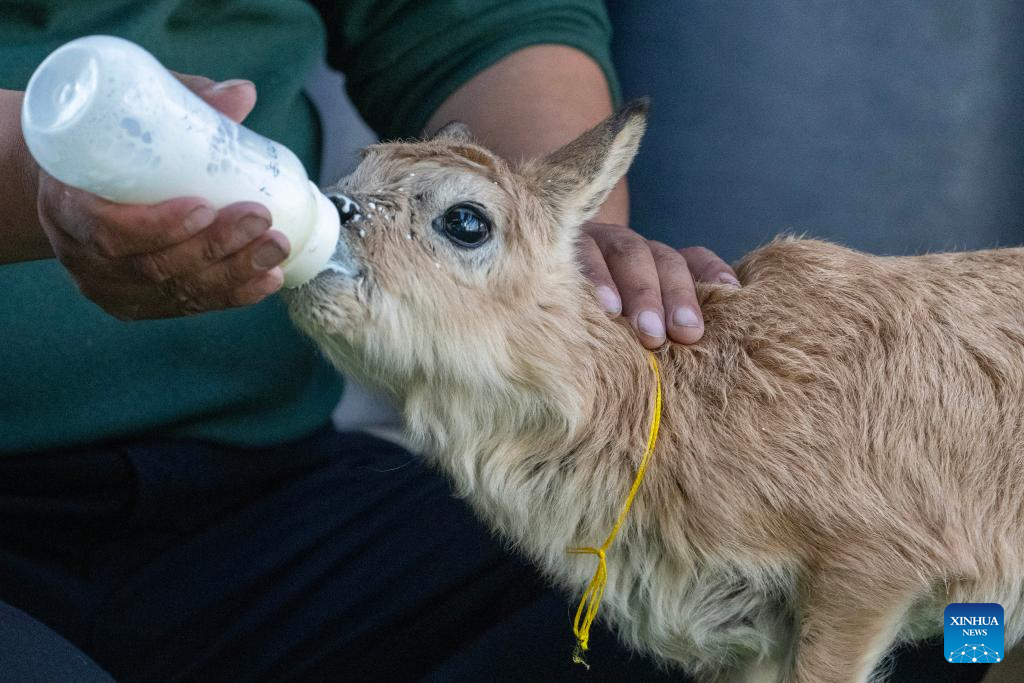
Ngawang Lodro, a staff member at a management station, feeds a Tibetan antelope calf in Changtang National Nature Reserve in southwest China's Xizang Autonomous Region, July 16, 2025. The Senlong Zangbo River, located in Changtang National Nature Reserve in Nagqu, is a vital migration route for Tibetan antelopes. Each July, Tibetan antelope calves and their mothers cross the river and migrate to their habitats. Over the past three years, the number of Tibetan antelope migrating across this river has exceeded 150,000 each year.
Thanks to effective conservation measures, the number of Tibetan antelopes in Xizang has increased to more than 300,000, according to data from the region's ecology and environment department. (Xinhua/Jiang Fan)
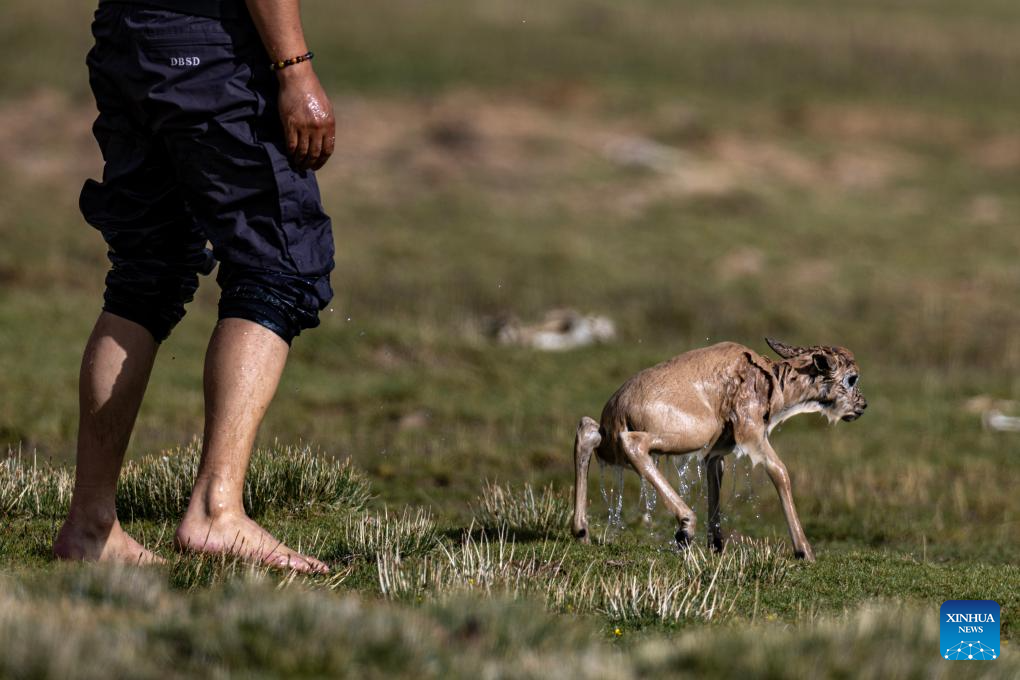
A stranded Tibetan antelope calf is rescued by a ranger in Changtang National Nature Reserve in southwest China's Xizang Autonomous Region, July 14, 2025. The Senlong Zangbo River, located in Changtang National Nature Reserve in Nagqu, is a vital migration route for Tibetan antelopes. Each July, Tibetan antelope calves and their mothers cross the river and migrate to their habitats. Over the past three years, the number of Tibetan antelope migrating across this river has exceeded 150,000 each year.
Thanks to effective conservation measures, the number of Tibetan antelopes in Xizang has increased to more than 300,000, according to data from the region's ecology and environment department. (Xinhua/Jiang Fan)
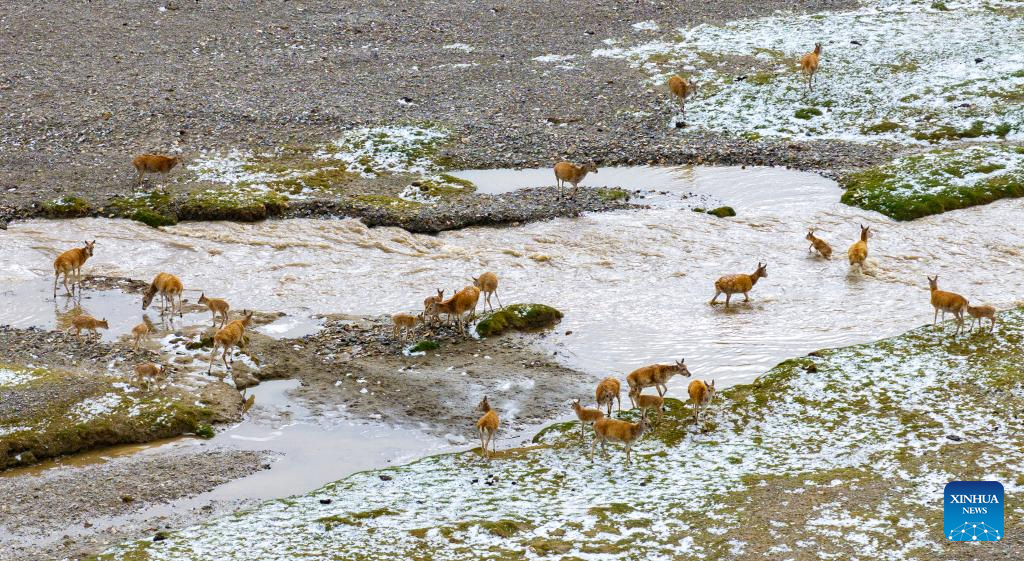
This aerial drone photo shows Tibetan antelopes crossing the Senlong Zangbo River in Changtang National Nature Reserve in southwest China's Xizang Autonomous Region, July 14, 2025. The Senlong Zangbo River, located in Changtang National Nature Reserve in Nagqu, is a vital migration route for Tibetan antelopes. Each July, Tibetan antelope calves and their mothers cross the river and migrate to their habitats. Over the past three years, the number of Tibetan antelope migrating across this river has exceeded 150,000 each year.
Thanks to effective conservation measures, the number of Tibetan antelopes in Xizang has increased to more than 300,000, according to data from the region's ecology and environment department. (Xinhua/Jiang Fan)



